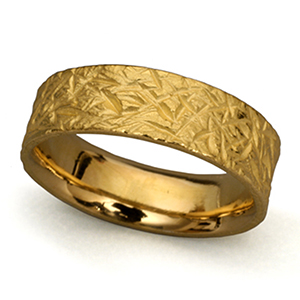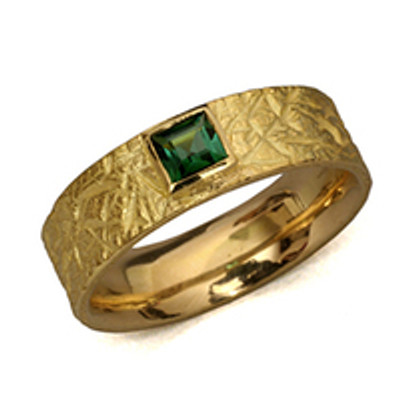Depletion Gilding: Enrich the Surface of Jewelry
Posted by Liaung-Chung Yen on on 31st Jul 2014
Reproduced below is a short piece from Liaung-Chung Yen on his Depletion Gilding technique. It can be found in Facts Corner under Techniques.
Depletion gilding is a technique that enriches the surface of jewelry and other items made from metal alloys containing gold. The amount of other metals depends on the karat, or purity, of the gold. For example, 18k gold is 75% pure and 14k gold is 58.33% pure. Typically copper, silver, and zinc are mixed with gold, although other metals may be added (usually to change its color).
 Depletion gilding
involves applying an acid substance that brings copper to the surface as a
black scale which is removed by repeated hammering and heating or by applying a
pickle solution that dissolves the copper oxide. By repeating the process the
surface of the item is left with a thin layer of pure gold. The process differs
from electric plating in that no additional metal is added and no gold alloy is
lost. The gold content remains on the surface.
Depletion gilding
involves applying an acid substance that brings copper to the surface as a
black scale which is removed by repeated hammering and heating or by applying a
pickle solution that dissolves the copper oxide. By repeating the process the
surface of the item is left with a thin layer of pure gold. The process differs
from electric plating in that no additional metal is added and no gold alloy is
lost. The gold content remains on the surface.
A major benefit is that it protects the jewelry's surface against discoloration from oxidation of the copper in the gold alloy. The process can leave the surface with a dull or matte appearance; but after cleaning and burnishing, the surface of the jewelry becomes more durable and achieves a more attractive polished finish. The process can also be used on silver jewelry to produce a surface appearance of pure silver.

